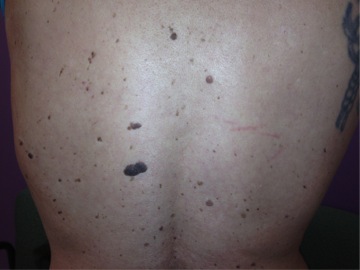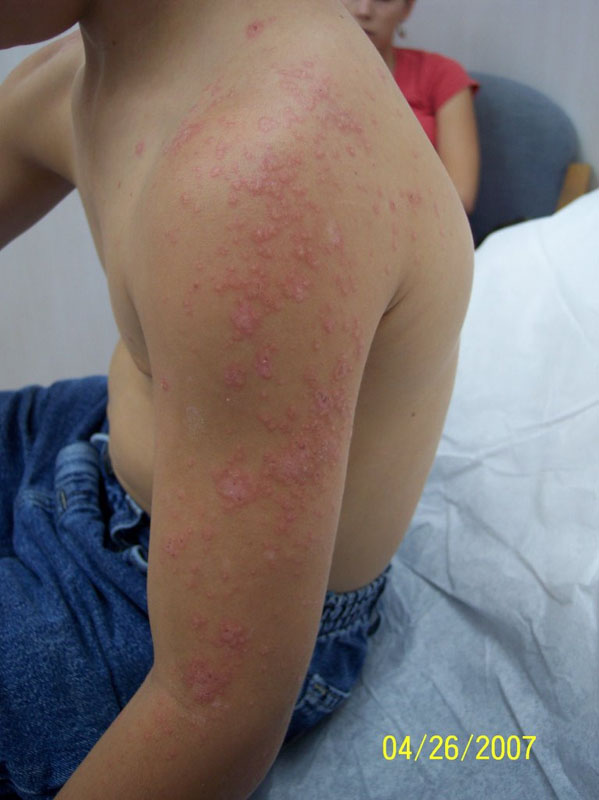Presenter: Brent Loftis, DO, Monica Nafsou, DO
Dermatology Program: Dermatology Program: A.T. Still University, KCOM Dermatology Residency Program, TX Division
Program Director: Program Director: Bill V. Way DO, FAOCD
Submitted on: May 1, 2010
CHIEF COMPLAINT: “Sores spreading on the face that started with shingles four years ago”
CLINICAL HISTORY: A 65-year-old Caucasian female with a four-year history of sores that started on the face after shingles. The sores have enlarged over the past few years and she feels the disease is spreading down towards the chest. As a retired physician, she has done excisional biopsies on herself and admits to using a scalpel on a regular basis to incise and drain the lesions, which gives her immense relief from the pressure of the lesions. She describes white tendon-like larvae and botfly-like larvae that come out and wrap around her scalpel.
Other information: The patient has traveled to South America several times for holiday and is concerned about having contracted a tropical parasite infection. Other medical history is significant for a brain tumor removed in 1992 and Alzheimer’s dementia. The patient denies tobacco, ETOH, and recreational drug use. NKDA. Medications include Synthroid, Aricept, Namenda, and Adderall. Unremarkable family history. The patient has been lost to follow-up for further information about the history and nature of the brain tumor and for re-testing abnormal lab values as listed below.
PHYSICAL EXAM:
Physical exam revealed a well-nourished, 65-year-old white female with appropriate affect. Examination of the skin reveals a large 7 x 3 cm ulcer with central black eschar and surrounding scar tissue on the right upper mid-forehead. There were two similar 4 mm ulcers surrounded with atrophic scarring on the nasal tip and left alar groove with partial destruction of the right anterior alar rim, which resulted from her scalpel use. On the mentum was a 6 cm patch of erythema with edema and numerous linear excoriations. There was no lymphadenopathy.
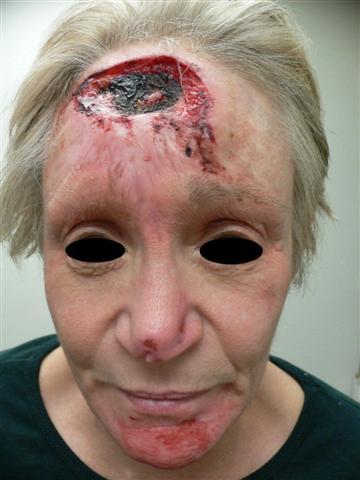
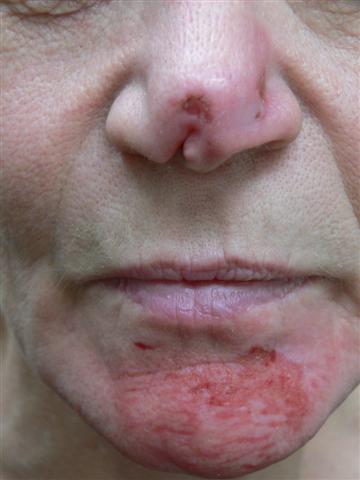
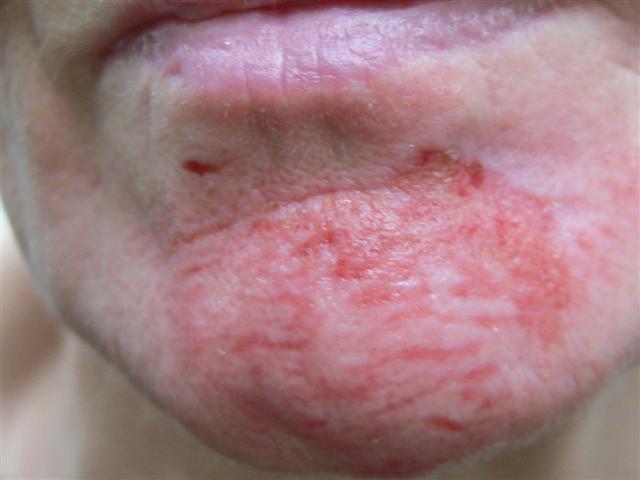
LABORATORY TESTS:
Bacterial culture of the forehead was positive for light growth of coagulase negative staphylococcus species, the culture of the nose was positive for growth of normal skin flora.
CBC within normal limits except for red cell distribution width 18.9% (normal 11.7-15%).
Serum Immunoglobulin G low at 607 (normal 700-1,600 mg/dL)
IgG, Subclass 1 low at 421 (normal 422-1,292 mg/dL)
IgG Subclass 2 within normal limits
IgG Sublcass 3 low at 26 (normal 41-129 mg/dL)
IgG Subclass 4 within normal limits
CMP and C-Reactive Protein within normal limits
TSH elevated at 11.59 (normal 0.45-4.5 uIU/mL)
Lipid panel within normal limits, except for slight elevation of total cholesterol 218 (normal 100-199 mg/dL)
DERMATOHISTOPATHOLOGY:
In the superficial dermis, there is a perivascular and interstitial inflammatory cell infiltrate composed of lymphocytes admixed with eosinophils.
DIFFERENTIAL DIAGNOSIS:
1. Trigeminal Trophic Syndrome
2. Delusions of Parasitosis
3. Herpetic reactivation and ulceration
4. Leprous Trigeminal Neuritis
5. Infectious- Miasis, syphilis, deep mycosis, parasite


